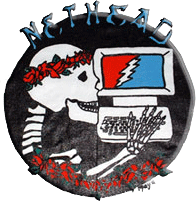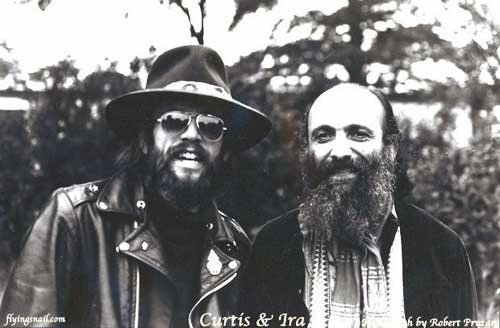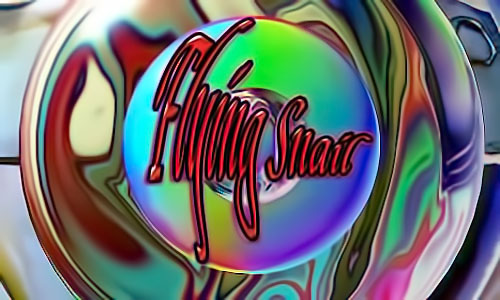
Freedom of expression and freedom of speech aren't really important unless they're heard...It's hard for me to stay silent when I keep hearing that peace is only attainable through war. And there's nothing more scary than watching ignorance in action. So I dedicated this Emmy to all the people who feel compelled to speak out and not afraid to speak to power and won't shut up and refuse to be silenced. - Tommy Smothers
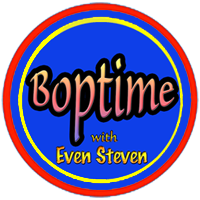
Boptime - Saturday Morning
6 AM East -- 3 AM Pacific -- 1000 UTC
Click: Listen On-Line for Even Steven

Mike Wilhelm & his Bottle Rock Blues & Rhythm Band featuring Neon Napalm
Visit Mike's Page - Free iTunes - MP3 Podcast - YouTube Video
September 04, BRB&RB - 4:30 - 6:30 - 8 PM - Lake County Fair - Circle Stage
September 06, Mike & Neon - 5 - 7:30 - 9 PM - Lake County Fair - Circle Stage
September 11, Mike & Neon - 5:30-8 PM - Tuscan Village - Lower Lake, CA
September 28, BRB&RB - 6:30-9 PM - Blue Wing Saloon - Upper Lake, CA
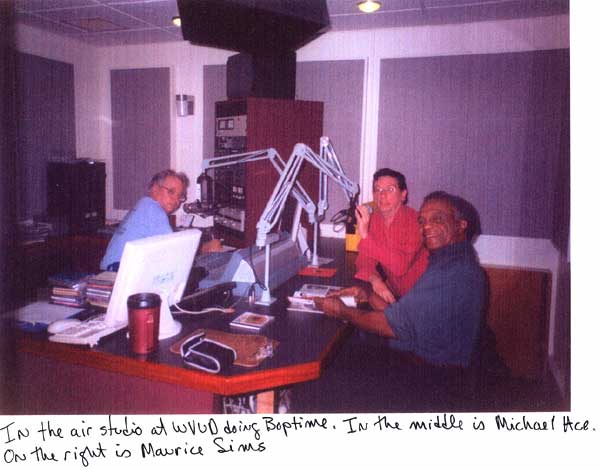
Even Steven, Michael Ace, Maurice Sims - WVUD
Maurice'll be joining me on Boptime, September 12th. We're doing a special about Lem Winchester. We'll have a guest who is writing a book about Lem, and he's gonna bring some rare recordings. It should be very inerestin'.
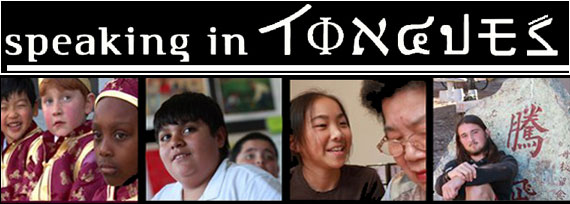

Speaking in Tongues
Patchworks Films
The heated debate over bilingual education usually takes place in courtrooms, at academic conferences and in editorial missives. At its most vitriolic the "English only" camp skews toward xenophobia and racism, while the opposition at times sounds utopian themes of American global economic resurgence with the aid of multilingual classrooms. Often neglected in this discourse is the firsthand experience of students, an oversight that veteran documentarians Marcia Jarmel and Ken Schneider beautifully rectify with their latest effort.
Closely following four very different local public-schoolers through an academic year, they draw on subtle nuances of the kids' stories to illustrate the complex shades and permutations of bilingual schooling. Two children are placed in immersion programs to retain their native tongues while learning English, and the other two are in the reverse situation. Their parents list both familiar and surprising reasons for enrolling their children, but each remains a strong proponent of the programs despite criticism from extended family, friends and a loud chorus of English-only activists. Even while dismissing common barbs, the families must confront unique challenges both humorous and serious.
With San Francisco becoming the first city to mandate access to bilingual opportunities for all public schoolchildren, this thought-provoking documentary could hardly be timelier. --Ilya Tovbis, San Francisco International Film Festival
SEATTLE, WASHINGTON
NorthWest Film Forum
Sunday, September 20, 2009
(Filmmakers present)
3:00 PM 5:00 p.m 7:00 p.m.
Panel afterward 3:00 p.m show
TACOMA, WASHINGTON
Pacific Lutheran University, Ingram 100
Monday, September 21 @ 5:30 p.m.
(Filmmakers present) -
Free
KANSAS CITY
International Film Festival
Glenwood Arts Theatre
Overland Park, Kansas
Tuesday, September 22nd at 7:30 p.m.
NEW ORLEANS, LOUISIANA
New Orleans Film Festival
The Porch 7th Ward Neighborhood Center
943 Pauger St.
Saturday, October 10 at 7:00 p.m.
New Orleans Museum of Art
1 Collins C. Diboll Circle, City Park
Monday, October 12 at 7:30 p.m.
EAST PALO ALTO, CA
United Nations Association Film Festival
Eastside Theater
October 20, 5:40 p.m.
(Filmmakers present)
SAN DIEGO, CA
San Diego Asian Film Festival
Sunday, October 25, 2009 1 p.m.
(Filmmakers present)
BELLINGHAM, WA
Pickford Film Center
October 2009
(Screening info to come.)
COLORADO SPRINGS, CO
Rocky Mt. Women's Film Festival
Nov. 6-8, 2009
(Screening info to come)
INFORMATION TO COME
Portland - Fall 2009
Chicago - Fall 2009
CONFERENCES
Two-Way CABE (July 2009)
National Network for Early Language Learning (July 2009)
American Council on the Teaching of Foreign Languages (November 2009)
FESTIVALS
San Francisco International Film Festival
Temescal Street Cinema
Continue Reading At Patchworks Films: http://www.patchworksfilms.net/
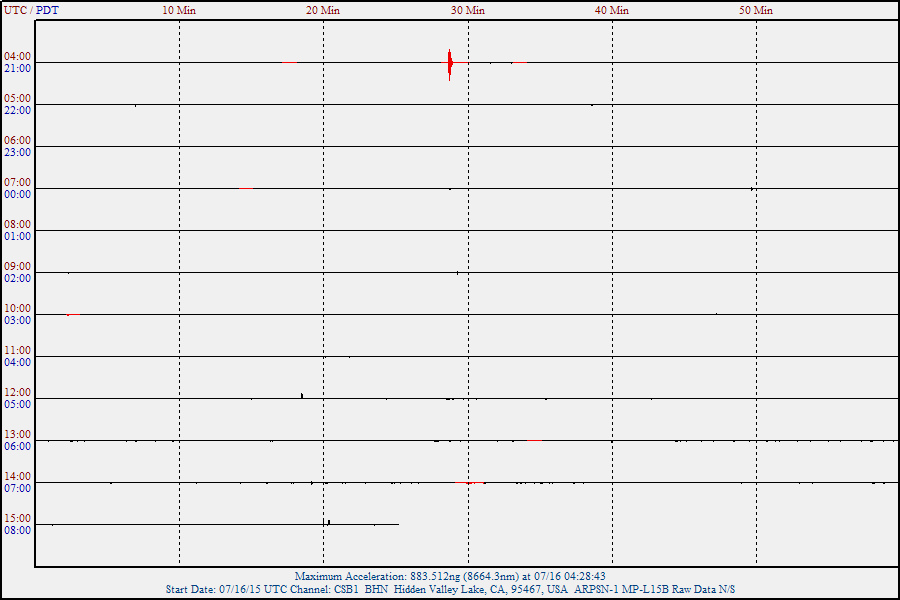
ARPSN - Amateur Radio Public Seismic Network
An earthquake is the way the Earth relieves its stress by
transferring it to the people who live on it. - Dr. Lucy Jones
ARPSN - Heliplots - Progress Log - Weather - HowTo: View Earthquakes
Seismic Activity Heliplots & Local Weather Data - Cobb [Mountain], CA 95426 USA
Misguided Congress Supports War Criminals Bush, Cheney, Rumsfeld, Rice, etc.

Photo of boots by Ward Reilly, member VVAW, VFP, Advisor to IVAW.
via rainbowpuddle.com and Dahbud Mensch
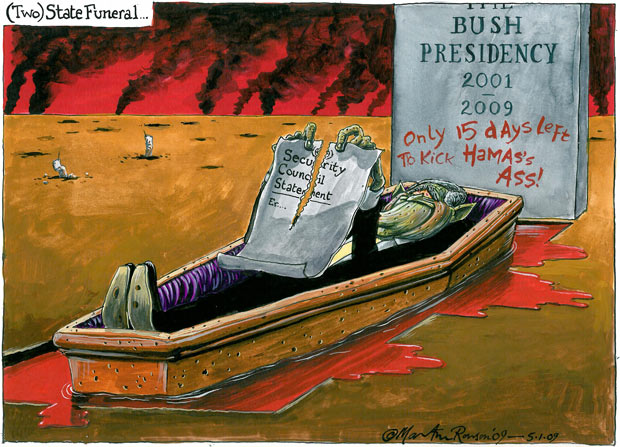
Martin Rowson
Israel has yet to learn the US lesson, that the war on terror was a failure
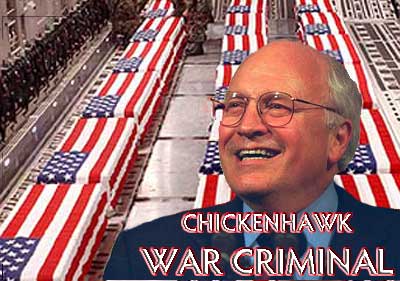
Guantánamo closure sparks political wrangle between Obama and Cheney
Guardian.co.uk
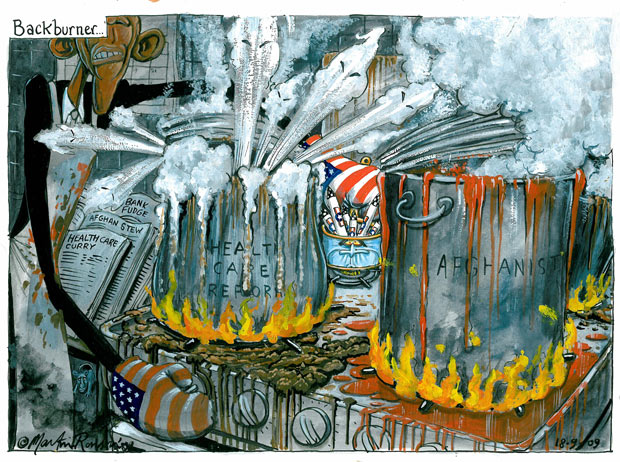
Martin Rowson - Backburner - US scraps plans for missile defence shield in central Europe
![]()

A Funny Thing Happened On the Way to Woodstock
[The Unedited Version] by Paul Krassner
Prologue :
Newspaper headlines blared the massacre in Beverly Hills of Roman Polanski’s wife, Sharon Tate, their unborn baby and a few unfortunate friends. This was in August 1969, and the orchestrator of those murders, Charles Manson, would not be caught until December. But now I was on my way to the antithesis of that horror. Along with 400,000 others on a countercultural pilgrimage, I was heading for the Woodstock Festival of Music & Love. I was wearing my yellow leather fringe jacket for the first time. In one of the pockets there was a nice little stash of LSD. If you happen to be brand-name conscious, then you’ll want to know that it was Owsley White Lightning, and each tablet contained exactly 300 micrograms of excellent acid.
The CIA originally envisioned using LSD as a means of control, but, without anybody’s permission, millions of young people had already become explorers of their own inner space. Acid was serving as a vehicle for deprogramming themselves from a civilization of sadomasochistic priorities. A mass awakening was in process. There was an evolutionary jump in consciousness. The underground press was flourishing, and when LSD was declared illegal in October 1966, the psychedelic San Francisco Oracle became politicized while the radical Berkeley Barb began to treat the drug subculture as fellow outlaws. Acid was even influencing the stock market. Timothy Leary let me listen in on a phone call from a Wall Street broker who thanked Leary for turning him onto acid because it gave him the courage to sell short.
With LSD, you could actually see music, you could taste ice cream in your toes , and you felt totally at one with Nature, in tune with the Universe. The blossoming counterculture--encompassing sex, drugs and rock’n’roll--was at its core a spiritual revolution, with religions of repression being replaced by disciplines of liberation, where psychotropic drugs became a sacrament, sensuality developed into exquisite forms of personal art, and the way you lived your daily life demonstrated the heartbeat of your politics. There was an epidemic of idealism. Altruism became the highest form of selfishness. You could trust your friends more than the government, and “Make love, not war” became a credo of the antiwar movement. The CIA’s scenario had backfired.
When I first told my mother about taking LSD, she was understandably concerned. “It could lead to marijuana,” she warned.
My mother was right.
![]()
Abbie Hoffman was a reader of my magazine, The Realist, before we became friends. He tempered his fearlessness with a gift for humor that was sharp and spontaneous. On a particularly tense night on the Lower East Side, we were standing on a street corner when a patrol car containing four police cruised by. These were the same cops from the 9th Precinct that Abbie took great pleasure in defeating at the pool table.
“Hey, fellas,” he shouted, “you goin’ out on a double date?”
In December 1967, Abbie, his wife Anita and I decided to take our first real vacation, in the Florida Keys. We rented a small house on stilts in Ramrod Key. This was the week before Christmas. We bought a small tree and spray painted it with canned snow. Now, we were tripping on LSD as a hurricane reached full force.
“Hey, this is pretty powerful fuckin’ acid,” Abbie laughed.
We watched Lyndon Johnson on a black and white TV set, only LBJ was purple and orange. His huge head was sculpted into Mount Rushmore. “I am not going to be so pudding-headed as to stop our half of the war,” he was saying. And the heads of the other presidents--George Washington, Thomas Jefferson, Abraham Lincoln and Theodore Roosevelt--were all snickering to themselves and covering their mouths with their hands so they wouldn’t laugh out loud. That was the moment we acknowledged that we’d be going to the Democratic convention next summer to protest the war in Vietnam.
That evening, when the hurricane had subsided, I followed a neighborhood crow down the road, then continued walking to town by myself to use the pay telephone at a gas station. First I called Dick Gregory in Chicago, since it was his city we were planning to invade. He told me that he had decided to run for president, and he wanted to know if I thought Bob Dylan would make a good vice president. “Oh, sure,” I said, “but to tell you the truth, I don’t think Dylan would ever get involved in electoral politics.” Gregory ended up with assassination researcher Mark Lane as his running mate.
Next I called Jerry Rubin in New York to arrange for a meeting when we returned. The conspiracy was beginning. And so it came to pass that, on the afternoon of December 31, several activist friends were gathered at the Hoffmans’ apartment, smoking Columbian marijuana and planning the Chicago action. Our fantasy was to counter the convention of death with a festival of life. While the Democrats would present politicians giving speeches at the convention center, we would present rock bands playing in the park. There would be booths with information about drugs and alternatives to the draft.
We needed a name. What would be appropriate to signify the radicalization of hippies? I came up with yippie . We could be the Yippies! It was perfect--a traditional shout of spontaneous joy which had just the right attitude for a media myth. I worked my way backwards. Yippie could be derived naturally from the initials YIP. Then, for what words could YIP become an appropriate acronym? Youth --this was essentially a movement of young people involved in a generational struggle. International --it was happening all over the globe, from Mexico to France, from Germany to Japan. And Party --in both senses of the word. We would be a party and we would have a party. We would be the Youth International Party, and we would be called the Yippies.
It was simply a catchy label to describe a phenomenon that already existed: an organic coalition of hippie dropouts and political activists. Our culture was our politics. In the process of cross-pollination at civil rights demonstrations and antiwar rallies, we had come to share an awareness that there was a linear connection between putting kids in prison for smoking marijuana in this country and burning them to death with napalm on the other side of the globe. It was the ultimate extension of dehumanization. After we held a press conference, a headline in the Chicago Daily News promised: “Yipes! The Yippies Are Coming!” The myth was already becoming a reality. We opened an office. Yippie chapters were forming on campuses, and Yippies across the country were beginning to find out what to call themselves.
In Chicago that August, Robert Pierson, a supposed biker who had volunteered to act as Jerry’s bodyguard turned out to be a police provocateur. Indiscriminate, sadistic violence by the cops reached a peak during speeches in Grant Park. Eventually, the Chicago Tribune reported that Pierson was “in the group which lowered an American flag.” In Official Detective magazine, Pierson himself wrote: “One thing we were to do was defile the flag. The American flag in the park was taken down, then rehung upside down. After this had been photographed, a group of us, including me, were ordered to pull it down and destroy it, then to run up the black flag of the Viet Cong. I joined in the chants and taunts against the police and provoked them into hitting me with their clubs. They didn’t know who I was, but they did know that I had called them names and struck them with one or more weapons.” And that’s what set off the incident which resulted in what the government-commissioned Walker Report would describe as “a police riot.”
![]()
One year later, as I wandered around the Woodstock Festival, I was overwhelmed by the realization that this tribal event was in actuality what the Yippies had originally fantasized about for Chicago. No longer did so many of these celebrants have to feel like the only Martians on their block. Now, extended families were developing into an alternative society before your very eyes. I had never before felt such a powerful sense of community.
The soundtrack was live, and the Hog Farm commune provided meals, servicing the largest Bed & Breakfast place in history. Actually, they had been hired to provide security. But to Hog Farm leader Hugh Romney, security meant cream pies and seltzer bottles. He planned to wear a Smokey the Bear costume to warn people about putting out fires. This was not merely a three-day outdoor concert. This was a Martian convention. Or, as Abbie Hoffman called it, Woodstock Nation.
The political contingent was encamped in a huge red-and-white-striped tent christened Movement City. In the afternoon, a mimeograph machine was churning out flyers proclaiming that the outdoor concerts should be free. At night, several festival-goers were busy unscrewing the metal-wire fencing that had been put up during the day. Yippie Roz Payne was among them. She helped take down the No Trespassing sign and changed it into a sign that read Peoples Bulletin Board.
On an afternoon when Abbie, Roz and I took a stroll down Merchants Way, which led to the stage that was still being constructed, they took down the Merchants Way sign and put up a sign that read Ho Chi Minh Trail. Lights had not yet been strung up along the path, and as it got darker, we kept walking and stumbling until we got lost in the woods. After a couple of hours, we saw a light through the trees, realized that we were right back where we started, and we laughed ourselves silly.
Abbie would get serious later on, though, ebbed on by his sense of justice and fueled by the tab of White Lightning that we had each ingested. While The Who were performing, he went up on stage with the intention of informing the audience that John Sinclair, manager of the MC5 and leader of the White Panther Party, was serving ten years in prison for the possession of two joints; that this was really the politics behind the music.
Before Abbie could get his message across, Peter Townshend transformed his guitar into a tennis racket and smashed him on the head with a swift backhand. Townshend had assumed that Abbie was just another crazed fan. When The Who played at Fillmore East the previous week, a plainclothes cop rushed on stage and tried to grab the mike. He intended to warn the audience that there was a fire next door and the theater had to be cleared, but he was able to do so only after Townshend kneed him in the balls. Now he shouted at Abbie, “Get the fuck off my stage!” To the audience: “The next person that walks across the stage is going to get killed.” The audience laughs. “You can laugh, but I mean it!”
I inadvertently ended up with a political mission of my own at Woodstock. For a while, I was hanging around the Press Tent, which later turned into the Hospital For Bad Trips. A reporter from the New York Daily News asked me, “How do you spell braless?” I replied, “Without a hyphen.” He pointed out two men with cameras who were from the Criminal Intelligence Division of the Army. And a free-lance writer who knew someone with a source in the White House told me how the Nixon administration had assigned the Rand Corporation think tank to develop a game plan for suspending the 1972 election in case of disruption. I decided to mention this at every meeting I attended, every interview I did, every campus I spoke at and every radio show that I was a guest on.
A year later, the story was officially denied by Attorney General John Mitchell. He warned that whoever started that rumor ought to be “punished.” I wrote to him and confessed, but he never answered my letter. Actually, investigative journalist Ron Rosenbaum was able to trace the “rumor” back and discovered that I was the fifth level down from the original White House source. I believed it to be true, and even rented a tiny one-room apartment I could escape to when martial law was declared. It had a fireplace so that if the power went off I could cook brown rice.
Although I never used the place myself (a friend and her young son had been evicted, so I was glad to let them stay there), when I stopped to witness the level of my own paranoia, I flashed back to a moment at Woodstock. While meandering around the grounds, I had spotted an old friend, Tom Law, who was leading a group in yoga exercises, and I warned him, “If the government finds out you can get high just from breathing, they’re gonna ban oxygen.”
In February 1969, a group of Yippies were busy rolling several thousand joints and wrapping each one in a flyer wishing the recipient a Happy Valentine’s Day and containing facts about marijuana. More than 200,000 arrests for pot-smoking were made the previous year, and Mayor John Lindsay had just petitioned Governor Nelson Rockefeller to raise the penalty for possession from one year to four.
Those joints were sent to various mailing lists, such as teachers and media people, and to one individual only because he was listed in the phone book as Peter Pot. A local newscaster who displayed one of these joints was visited by a pair of narcotics agents, on camera, while he was still delivering the news. It was a TV first. Incidentally, the contents of all those joints had been paid for by Jimi Hendrix.
My favorite musical moment at the festival was Hendrix’s startling rendition of “The Star-Spangled Banner.” His guitar wailing of our national anthem brought me to tears. It was a wordless version of what I interpreted to mean, “It’s not that we hate America, it’s that we feel the American dream has been betrayed, and we will live our alternative.” On the other hand, my least favorite moment was when I discovered that my new yellow leather fringe jacket was stolen from the Movement City tent.
Epilogue:
In 1971, Yippie co-founder Ed Sanders’ book about Charles Manson, The Family , was published. It raised several questions, and I began my own investigation. After having lived behind bars for most of his life, Manson was out on the streets again. He began to explore and exploit the countercultural value system, from Haight-Ashbury to Strawberry Fields. Driving his family around in a school bus painted black, he stopped at the Hog Farm, whose school bus was painted in rainbow colors.
While traveling, the Hog Farmers had found themselves at a fork in the road. Up above them, two sky-writing planes were playing tic-tac-toe, and the Hog Farm decided to go one way if the X’s won and the other way if the O’s won. Now they were back on their land, all standing in a circle, chanting “Om,” which somehow caused the visiting Manson to start choking and gagging, so his family began counter-chanting “Evil.”
It was an archetypal confrontation. Manson even tried to get Romney’s wife in exchange for one of his girls--plus the pink slip to the black bus. It was never made clear, if Romney had accepted this trade, by what means the Manson family would have departed, but that was a moot point. The black bus finally left, mission unaccomplished.
In the course of my research, I met Preston Guillory, a former deputy sheriff at the Malibu Sheriff’s Department, which aided the Los Angeles Sheriff’s Department in the original raid of the Spahn Ranch. Guillory had participated in that raid, and I interviewed him at an apartment in San Francisco.
“We had been advised to put anything relating to Manson on a memo submitted to the station, because they were supposedly gathering information for the raid we were going to make,” he said. “Deputies at the station of course started asking, ‘Why aren’t we going to make the raid sooner?’ I mean, Manson’s a parole violator, machine-guns have been heard, we know there’s narcotics and we know there’s booze. He’s living at the Spahn Ranch with a bunch of minor girls in complete violation of his parole. Deputies at the station quite frankly became very annoyed that no action was being taken about Manson. My contention is this--the reason Manson was left on the street was because our department thought that he was going to attack the Black Panthers. We were getting intelligence briefings that Manson was anti-black and he had supposedly killed a Black Panther, the body of which could not be found, and the department thought that he was going to launch an attack on the Black Panthers.”
And so it was that the presence of racism had morphed the Sheriff’s Department into collaborators in a mass murder. Manson was portrayed by the media as a hippie cult leader, and the counterculture became a dangerous enemy. Hitchhikers were shunned. Communes were raided. In the public’s mind, flower children now had poisonous thorns. But Manson was never really a hippie. His real family included con artists, pimps, drug dealers, thieves, muggers, rapists and murderers. He had known only power relationships in an army of control junkies. Manson was America’s Frankenstein monster, a logical product of the prison system--racist, paranoid, violent--even if hippie astrologers thought that his fate had been predetermined because he was a triple Scorpio.
The ‘60s had come to an end, and the quality of co-option was not strained. “Today is the first day of the rest of your life” became a slogan for the Bank of America, and later for Total breakfast cereal. More recently, Tampax advertised its tampon as “Something over 30 you can trust. And names changed. Hippies became freaks. Negroes became blacks. Girls became women. Richard Alpert became Baba Ram Dass. Hugh Romney became Wavy Gravy, and his wife, Bonnie Jean, became Jahanarah. Yippie organizer Keith Lampe became Ponderosa Pine. My sister Marge became Thais. San Francisco Oracle editor Allen Cohen became Siddartha and moved to a commune where everybody called him Sid. They thought his name was Sid Arthur.
These days, there seems to be a mass awakening in process, comparable to the evolutionary jump in consciousness that took place during the '60s. It gives me a sense of hope, as well as a sense of continuity, that countercultural values have “infiltrated” mainstream awareness: the peace movement, organic food, animal rights, protecting rainforests, environmental sustainability, growing hemp, anti-pollution, recycling waste, racial equality, feminism, renewable energy, alternative healthcare, diversified spiritual practices.
The seeds that were planted then continue to blossom now. The spirit of Woodstock continues to be celebrated at such annual events as the Rainbow Gathering, Burning Man, Earthdance, the Oregon County Fair, the Starwood Neo-Pagan Festival, Pete Seeger's Clearwater Festival, the Coachella Valley Music & Arts Festival, and even such electronic magic as the montage of musicians around the globe playing and singing "Stand By Me" on YouTube.
And, yes, all the psychedelic relics I know have not stopped serving as agents of change. During the past four decades, there has been a linear progression from Jimi Hendrix playing “The Star-Spangled Banner” at Woodstock to Aretha Franklin singing “My Country, ’tis of Thee” at the inauguration of Barack Obama.
![]()
Ira Cohen (born February 3, 1935) is an American poet, publisher, photographer and filmmaker born in New York City to deaf parents.[1] During the 1960s, he traveled to Tangier, where he published the exorcism magazine GNAOUA.[1] He also published The Hashish Cookbook under the name of Panama Rose. He continued to travel until 1980, when he returned to New York City, where he now resides.
In 1961 Cohen took a Yugoslavian !hi! freighter to Tangier, Morocco where he lived for four years and published GNAOUA, a magazine devoted to exorcism introducing the work of Brion Gysin, William S. Burroughs, Harold Norse and other members of the Interzone.[1] GNAOUA also featured Jack Smith, and Irving Rosenthal. He also produced Jilala, a mythic recording of trance music by a sect of dervishes, which was recorded by Paul Bowles.
In his loft on the Lower East Side, Cohen created the "mylar images", future icons developed by a "mythographer". Among the reflected artists in his mirror: John McLaughlin, William Burroughs and Jimi Hendrix who said that looking at these photos was like looking through butterfly wings.[1] Timothy Baum, noted expert in Man Ray, Marcel Duchamp, said that these images were jewels and should be shown at Tiffany's. With this shamanic and tantric exercise Cohen explored the whole spectrum of photography from infrared to black light. In 1968 he also directed the "phantasmaglorical" film Invasion of Thunderbolt Pagoda and produced Paradise Now, a film of the Living Theatre's historic American tour. Invasion Of Thunderbolt Pagoda was inspired by the films of Kenneth Anger and Sergei Parajanov and began as an extension of his photography work with his Mylar chamber.
He went to the Himalayas in the '70s where he started the starstream poetry series under the Bardo matrix imprint in Kathmandu, publishing the work of Charles Henri Ford, Gregory Corso, Paul Bowles and Angus Maclise; and developing his art of bookmaking, working with native craftsmen. In 1972 he spent a year in San Francisco reading and performing and then returned to New York mounting photographic shows.
During the 1980s Cohen made trips to Ethiopia, Japan, and back to India where he documented on video the great kumbh mela festival, the largest spiritual gathering on the planet. In the latter part of the decade Synergetic Press published On Feet of Gold, a book of selected poems. He was also a contributing editor of Third Rail magazine, a review of international arts and literature based in Los Angeles.
Ira Cohen saw his poems published during the 1990s in England by Temple Press under the title Ratio 3: Media Shamans Along with Two Good Poet Friends, Gerard Malanga (Factory) and Angus Maclise. He had a show called Retrospectacle at the October Gallery in London and he also took part along with William Burroughs, Terry Wilson and Hakim Bey at the Here To Go Show in Dublin in 1992 which celebrated the painter Brion Gysin.
In 1994 Sub Rosa Records released his first CD, The Majoon Traveller, with Cheb i Sabbah, which also included the work of Don Cherry and Ornette Coleman.
He again exhibited in London at October Gallery in 2007.
Article/Links: http://en.wikipedia.org/wiki/Ira_Cohen
Standards Are Standards ???
Why Net Ratings Should Be Ignored?
The following come from Alexa's "Top 500 sites on the web" and were
obtained via: http://validator.w3.org/ on September 20, 2009 by ~@~

Invalid: google.com

Invalid: facebook.com

Invalid: yahoo.com

Invalid: youtube.com

Invalid: bling.com

Invalid: wikipedia.org

Invalid: blogger.com

Connection Refused: msn.com

Negotiation Failed: baidu.com

Invalid: twitter.com

Valid: flyingsnail.com
If Nobody Talks About It, So Will Eye
by ~@~
An earthquake is the way the Earth relieves its stress by
transferring it to the people who live on it. - Dr. Lucy Jones
In my little world there is some interesting stuff going on that deals with Hum, Swarms, and very powerful Earthquakes.
For example, there was a magnitude 8.3 earthquake September 29, 2009, near the Samoa Islands [Yes, USGS has it listed as an 8.0 and Eye suggest reading the USGS disclaimer. Other accepted seismic sources are available.]
Today, September 30 there was a magnitude 7.8 earthquake in southern Sumatra, Indonesia and here is a list of the world's recent large earthquakes.
Even more interesting are what appear to be (my terminology) "Floating Swarms, NOT Indicative of Volcanic Activity." Swarms happen in groups with the most recent activity occurring near Mammoth Lakes, California. A glance at the USGS list will, possibly, give support for the 'floating swarm' concept.
Here are some great heliplots via Larry Cochrane's Public Seismic Network
http://psn.quake.net/currentseismicity.html
Edward Pigot Seismic Observatory (EPSO), Coonabarabran, NSW, Australia

Where Have All the Flowers Gone?
"Without love in the dream, It will never come true." - Garcia/Hunter
Oh, I hope that I see you again I never even caught your name As you looked through my window pane -- So I'm writing this message today I'm thinking that you'll have a way Of hearing the notes in my tune -- Where are you going? Where have you been? I can imagine other worlds you have seen -- Beautiful faces and music so serene -- So I do hope I see you again My universal citizen You went as quickly as you came -- You know the power Your love is right You have good reason To stay out of sight -- But break our illusions and help us Be the light - "Message" by Michael Pinder
Previous Articles Moved To August Archive

